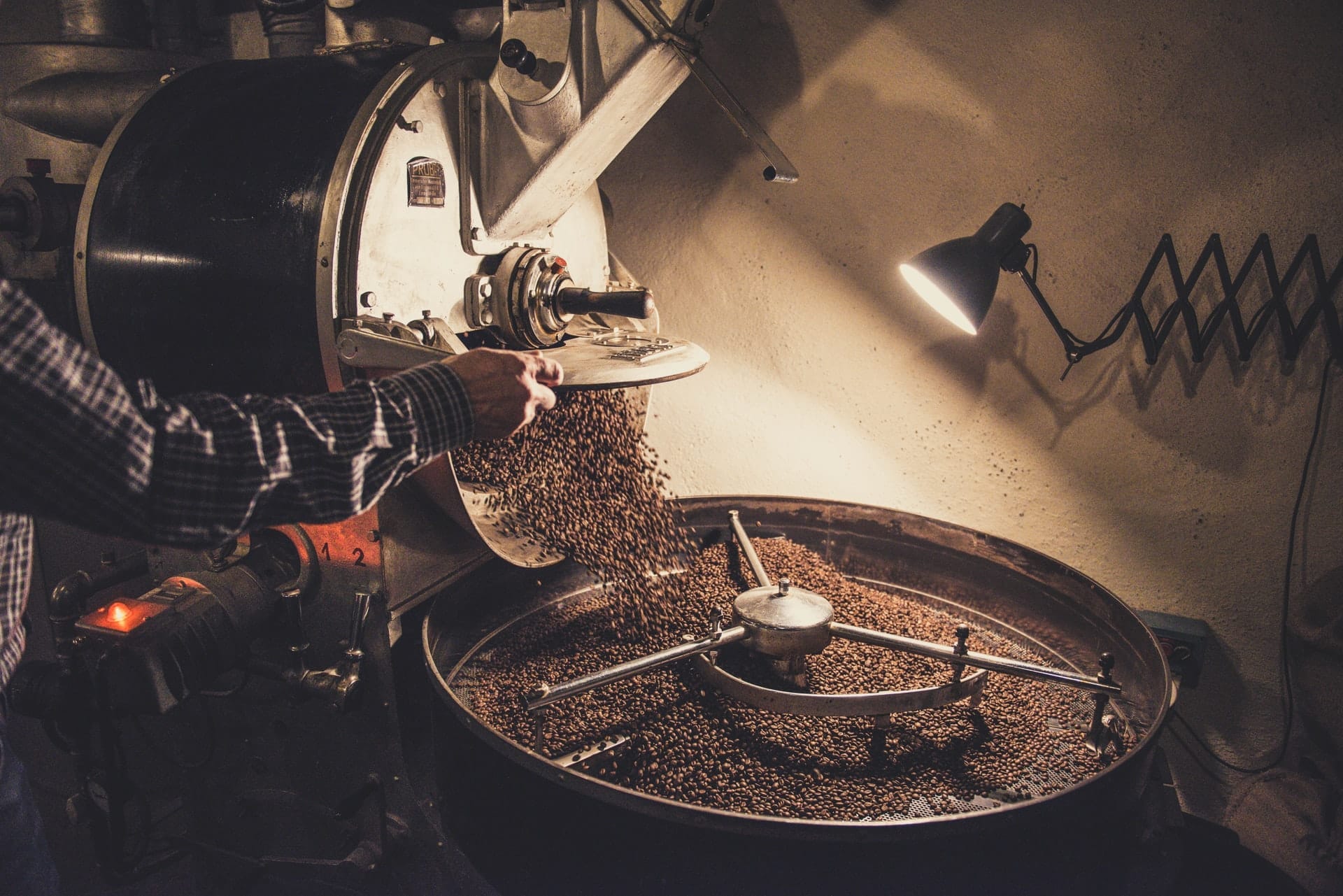We carry out a coffee industry analysis to get an overview of the industry's current position and what level of competition is present in the industry.
Hello everyone! How are you guys? What are your plans for today? Wanna climb Everest or go on a moon expedition?
Okay, before you start thinking that I have gone nuts, let me tell you, I just had my morning coffee. So it's probably the coffee talking.
I am sure you guys can relate since coffee is really a morning fuel for many of us. By the way, I have exciting news for my coffee lover readers. Guess what? Today we will be conducting a coffee industry analysis.
You guys must be thinking about why I decided to analyze the coffee industry in specific. Well, the coffee industry is huge, and it is linked to an ordinary person's life.
Coffee is a part of our daily routine. It has become a household product over the years. But, did you know that out of the entire population of the earth, that is 7.753 billion, more than 1 billion people drink coffee daily?
The coffee industry has a significant share in the world economy since more than 125 million people earn bread for their families through the coffee industry. Most of these people are farmers who produce coffee, and their livelihood is dependent on the demand for coffee.
The Coffee industry generates $200 billion annually. Currently, it is estimated that around 166.5 million bags of coffee are consumed each year. A significant increase in the demand for coffee has been observed. In the last 50 years, coffee's market size increased by 150%.
A lot of countries are involved in the production process of coffee, but Brazil is considered to be a significant coffee-producing country. Since Coffee plants require a tropical climate to grow and nurture, the climate of weather enables the production of coffee.
Brazil is the largest producer as well as the largest exporter of coffee. It exports more than 2,680,515 metric tons of coffee as it's responsible for shipping more than 80% of the coffee across the globe.
After the coffee-producing countries export coffee, it doesn't really land on our table. Instead, traders act as middlemen in the market. Big coffee trading companies such as Neumann Kaffee Gruppe, Ecom Agroindustrial, Olam, etc., buy coffee and distribute it in the market.
Our favorite coffee brands, let it be Peet's Coffee and Tea or any other brand, buy coffee and supply it to the consumer.
Big coffee chains are considered the key players in the coffee industry. For example, Starbucks is the biggest coffee chain in terms of revenue since it generates more than $23.52 billion annually.
Although the market for coffee varies from country to country, the coffee industry is said to be highly competitive since it has a very high number of consumers and a high number of suppliers.
Whether a small coffee shop or a big multinational coffee brand, everyone's selling coffee. More than 58 thousand cafes were present in Italy alone that sold coffee In 2017. Imagine how many cafes there would be worldwide and what sort of competition would take place in the coffee industry.
We have discussed a lot about the coffee industry in general; what it's worth in the global economy, who are the main exporters of coffee, and the significance of the coffee industry. Now let's proceed further and carry out the coffee industry analysis to get an overview of the industry's current position and what level of competition is present in the industry.

Coffee Industry Life Cycle
The coffee industry's life cycle is an excellent way to determine the stage at which the coffee industry is. An industry life cycle is divided into 5 stages, startup, growth, shakeout, maturity, and decline.
Startup Stage
The first stage of the life cycle is the startup stage. The product is being launched at this stage, and efforts are made to draw some consumers' attention to the product.
Coffee is way past that stage. The coffee industry was in the startup stage of its life cycle back in the 15th century when coffee was being consumed in Yemen's homes and coffee shops.
At that time, there was less competition in the industry, As coffee was only being consumed in Yemen. So people started investing in it, and the coffee industry started growing from there onwards.
Growth Stage
The second stage of the industry life cycle is the growth stage. In this stage, the market share of the product starts to increase, and the regulators ensure the product quality.
The coffee industry entered the growth stage during the 16th when the coffee industry started expanding in Europe. Later in the 18th century, it also began to spread in America. That's when the demand for coffee suddenly increased.
From there onwards, the market share of the coffee industry increased, and it is still growing. However, the coffee industry is still in the growth stage since new suppliers are still entering the market and improving their products through innovation.
Moreover, it is predicted that the coffee industry will grow at the rate of 4.28% till 2027, which means the industry is still at the growth stage.
Shakeout Stage
The growth stage is followed by the Shakeout stage. The shakeout stage refers to when the industry starts to get a bit saturated.
The coffee industry has not entered the shakeout stage yet. Still, the competition in the coffee industry is pretty chill. Instead of leaving the industry, companies are still entering the industry. So, the shakeout stage of the coffee industry lies in the future.
Maturity Stage
The maturity stage is the fourth stage of the industry life cycle. This is the stage when an industry is at its peak. The industry has reached its maximum size at the maturity stage, and the growth stops.
The coffee industry hasn't reached the maturity stage yet since there is still a lot of potential for its growth. Moreover, there are all sizes of companies present in the coffee industry, which means the industry is not at the maturity stage.
Decline Stage
The decline of industry occurs due to different reasons. For example, if a new substitute product is available in the market or the existing product is pushed out of the industry due to technological changes.
In the decline stage, it gets difficult for firms to seize profits; as a result, the majority of the firms leave the industry.
The coffee industry has indeed not reached the decline stage since there is still no complete substitute for coffee in the market yet. Moreover, companies are still enjoying high profits in the coffee industry. For example, in 2020, Starbucks earned a gross profit of over $20 billion despite being badly hit by the Covid'19 pandemic.

Assessing the Competition: Porter's Five Forces Model
To assess the competition in the coffee industry, we will use Porter's five forces model. This model sheds light on the five factors that affect the operations of a business.
Porter's model will also help the companies, who want to enter the coffee industry, to analyze whether their product will succeed in the market.
Competitive Rivalry
The first section of Porter's five force model highlights the number of rivals of newly entering companies already present in the coffee industry. It also analyses the product quality of the competitors.
Any company that enters the coffee industry right now will face significant competition. It'll have to face thousands of local small companies and well-established competitors like Starbucks, Costa Coffee, and Dunkin' Doughnuts. These coffee chains have a great quality of products, due to which they are at the top in the coffee industry.
Supplier Power
This section refers to the power of suppliers to manipulate the prices by controlling the supply.
In the case of the coffee industry, suppliers have less power since there is a vast number of coffee suppliers present in the industry. Moreover, many companies grow the required coffee beans themselves, such as Starbucks. All of this leads to less control of suppliers. As a result, the price isn't affected.
Buyer Power
Buyer power indicates the power of buyers to dictate prices in the industry. For example, in the coffee industry, due to the close to homogeneous nature of the product and many sellers, buyers have the power to influence the prices.
Plenty of options provided to the buyer allow the buyer to dictate the prices in the coffee industry.
Threat of Substitution
This is the fourth factor discussed in Porter's model. It refers to the possibility of getting replaced by substitutes. Any company entering the coffee industry should be worried about getting replaced by substitutes since there are substitutes of coffee present already in the market.
Coffee can easily be substituted with any hot, high, caffeine drink such as tea. Moreover, other beverages such as milkshakes, energy drinks, and cold drinks may be coffee substitutes soon.
Threats of New Entry
The last section of Porter's model highlights the threats that existing companies face because of the entry of new companies into the industry.
The threat of new entrants in the coffee industry is high since there are low barriers to entry. In addition, the skills required to run a coffee shop are not very technical. As a result, many people are entering the coffee industry.
Similarly, no huge investments are required to enter the industry. A small setup can also be used initially to enter the industry, and later it can be expanded.

Environmental Analysis
Environmental analysis is the last factor that needs to be included in the coffee industry analysis. The purpose to conduct this analysis is to highlight the factors that affect the operations of a business.
To conduct this analysis, both SWOT and PESTLE analyses are used. This will highlight the internal and external factors that affect a company's operations inside the coffee industry.
Pestle Analysis
Pestle analysis is a business tool used to highlight the external factors that an organisation faces. It highlights political, economic, social, technological, legal, and environmental factors that affect an organization.
● Political Factors
Since coffee is transported from where it is produced to countries that consume it, it is highly dependent on the government's trade policies. Therefore, it is quite possible that if governments ban coffee imports, the demand for coffee will drop, and the companies in the coffee industry will suffer.
● Economic Factors
If the exchange rate of countries importing coffee deteriorates, the price of importing coffee will increase. This can cause a fall in the consumption of coffee. As a result, companies in the coffee industry can experience losses.
● Social Factors
Companies in the coffee industry will suffer if consumers adopt any other substitute for coffee. Consumer tastes can change over time. Similarly, demographic changes such as an increase in the number of children can cause a fall in demand for coffee.
● Technological Factors
Coffee machines can attract people to buy coffee since now they can use machines to make coffee. Therefore, this technological development will increase the demand for coffee and benefit the companies in the coffee industry.
● Legal Factors
Like many other food products, Coffee is subject to many strict Food and Safety regulations. Heavy penalties and bans can be imposed on coffee in countries with strict foods and beverages laws since coffee contains high amounts of nicotine. This can decrease the consumption of coffee in certain countries. As a result, sales of coffee selling companies will drop.
● Environmental Factors
As the world is moving towards sustainable farming, this would increase the price of coffee cultivation. This would further make coffee expensive; as a result, the consumption of coffee would decrease.
You can find an extensive list of these factors in our comprehensive PESTLE analysis of the coffee industry.
SWOT Analysis
SWOT analysis highlights internal and external factors that affect an organization's operations.
● Strengths
Coffee has a huge market since coffee is consumed all across the globe. Such a huge consumer base helps companies in the coffee industry to enjoy huge profits.
● Weaknesses
Companies operating in the coffee industry have to face high competition. Due to low barriers to entry, there are a lot of companies present selling almost identical coffee. Naturally, this is a weakness for a company in the coffee industry.
● Opportunities
Companies can differentiate themselves from their competitors by using technology to introduce new flavours in the industry. This can help them gain a competitive edge.
● Threats
A global recession can lower the standard of living of the people. As a result, they will stop consuming coffee. This can cause a fall in demand for coffee and shrink the profit margins of companies in the coffee industry.

Coffee Industry Analysis: Final Word
To summarise, we started off with the significance of the coffee industry for consumers and the global economy. We then discussed who are the primary producers and distributors of coffee.
After getting a bit of information about the coffee industry, we proceeded further to conduct a coffee industry analysis. To do so, we first investigated at what stage of the industry life cycle the coffee industry is.
We found out that the coffee industry is still in the growing stage since its market share is still growing, and companies are still entering the industry.
After that, we assessed the competition in the coffee industry with the help of Porter's five forces model.
We then concluded the industry analysis with the environmental analysis with the help of two business tools, PESTLE and SWOT analysis.
After reading this article, we hope that you guys have an insight into the coffee industry and you have learned how to conduct an industry analysis.


